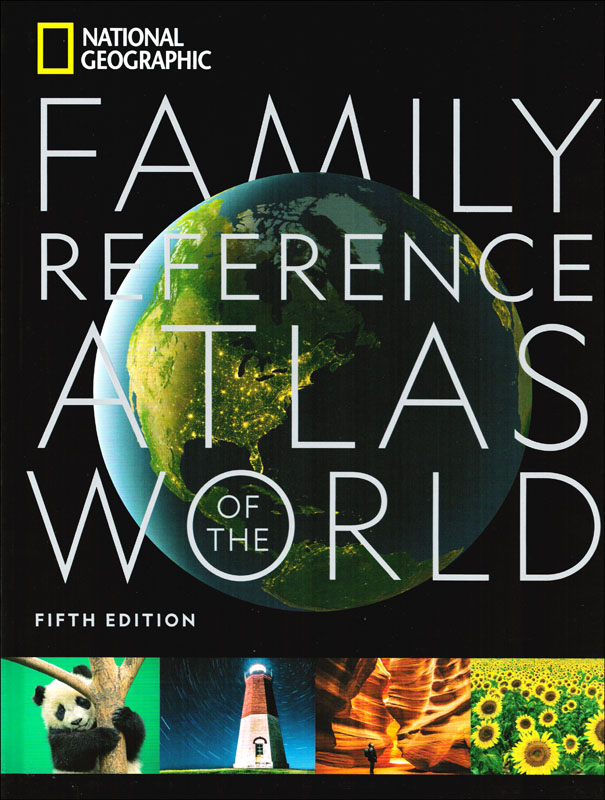Did I hear someone say comprehensive? That's a fitting word for this 399-page atlas by the National Geographic Society. Since I'm going to need a lot of space to tell you all about this one, I'm going to get started right away. We'll begin with the usual couple of pages on different types of maps and map symbols, though if you've ever picked an atlas up before, you'll find this one to be as logical and straight-forward as any other. After map fundamentals, a planet overview covers the earth's structure and landscape, freshwater and oceans, climate and weather, and climate change. This section has maps of the physical and political world and the north/south poles. This whole section gives an amazing overview of the physical world as a whole – before launching us into the next sections which look at wildlife, the human journey, and an in-depth look at each of the seven continents in detail. The Wildlife and Wild Places section provides an overview of our biosphere and biodiversity, nature safe havens, and environmental stresses or threats to our planet. The Human Journey dives into the human impact on our planet, population, urbanization, migration and refuges, languages, religion, quality of life topics such as education, literacy, and happiness scores, health, agriculture and diet, borders, economy and trade, energy, and the digital world. Moving into each continent, full color maps throughout show towns and cities, roadways, rivers, lakes, mountains, and the like. There are also little fact boxes containing information like area, population, religion, flag, and more for each country or state shown. Each continent is introduced with some incredible photography and clear text including brief details of the continent's physical geography, history, culture, and economy. The atlas concludes with sections on the oceans and space, and an appendix which I'll outline for you a little later. What exactly do these last two sections contain? An oceans section includes world oceanography; limits of the oceans and seas; floor maps of the Atlantic, Pacific, Indian, and Arctic Oceans. The space section introduces you to some things you may not have come across before. There are maps of both sides of the moon, maps of the inner and outer solar system, maps of the western and eastern hemisphere of Mars, a 3D structure showing the universe, a detailed look at the Milky Way galaxy and a cosmic timeline covering numerous space missions. Then comes the appendix which is loaded with good material, including abbreviations, metric conversions, geographic and geopolitical comparisons, flag key and facts, foreign terms, world time zones, glossary of geographic terms, and a 110-page index (which includes an index of Moon locations). This atlas will serve you well in more ways than you probably ever thought you would need. The large, 10.5" x 14" format and quality hardcover binding will stand the test of time and help keep this atlas looking attractive for years to come. ~ Zach/Deanne


